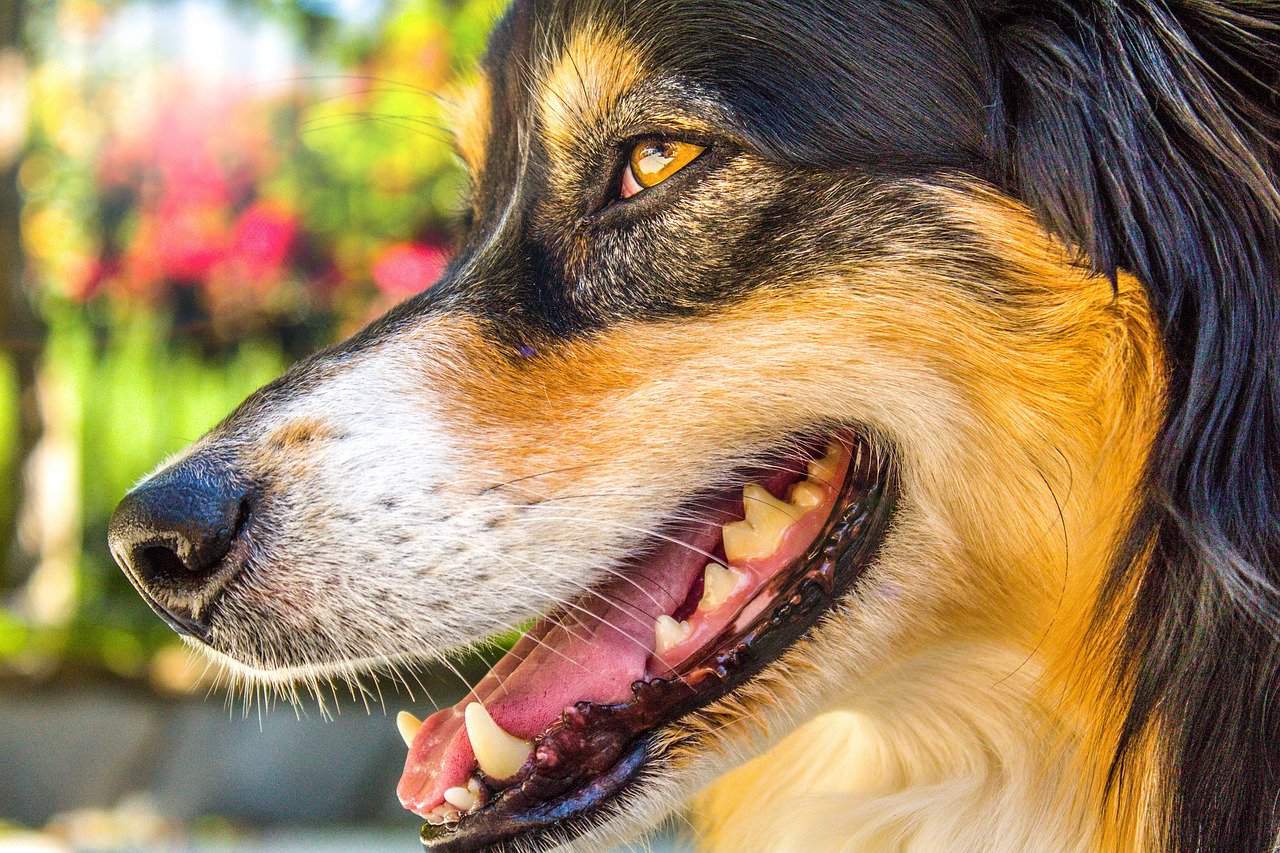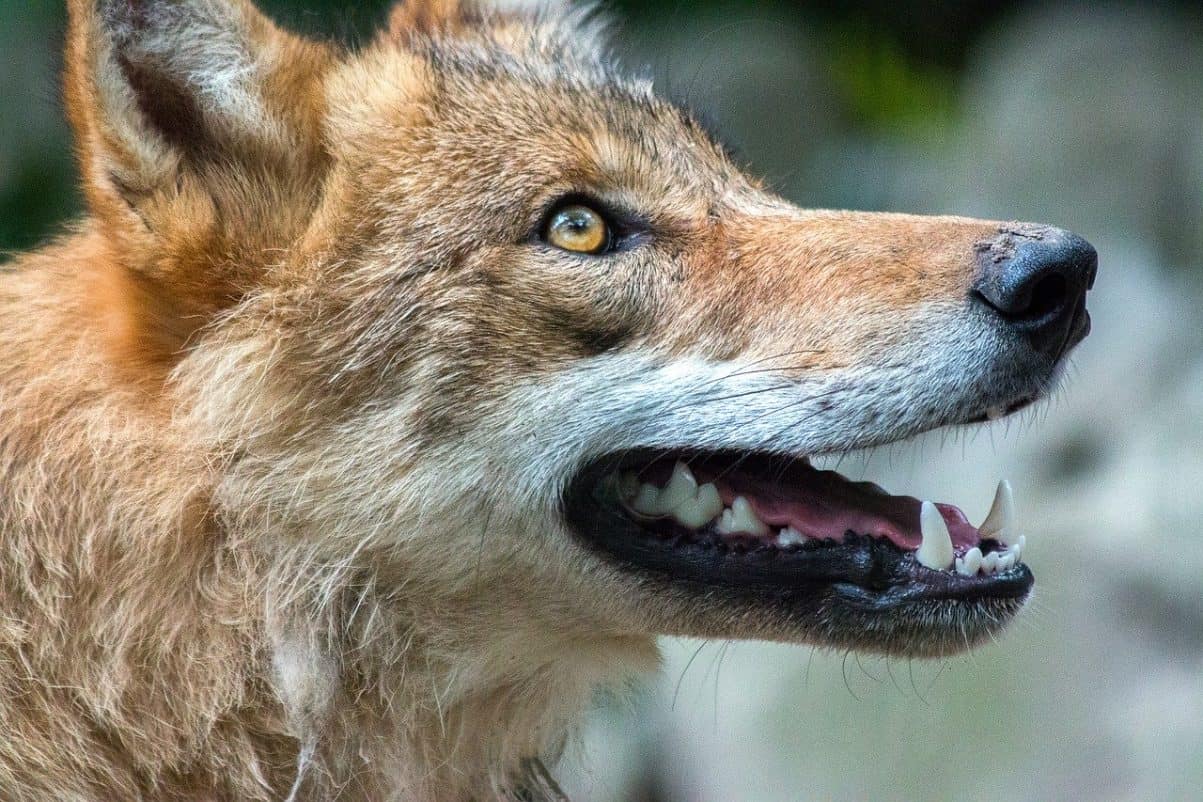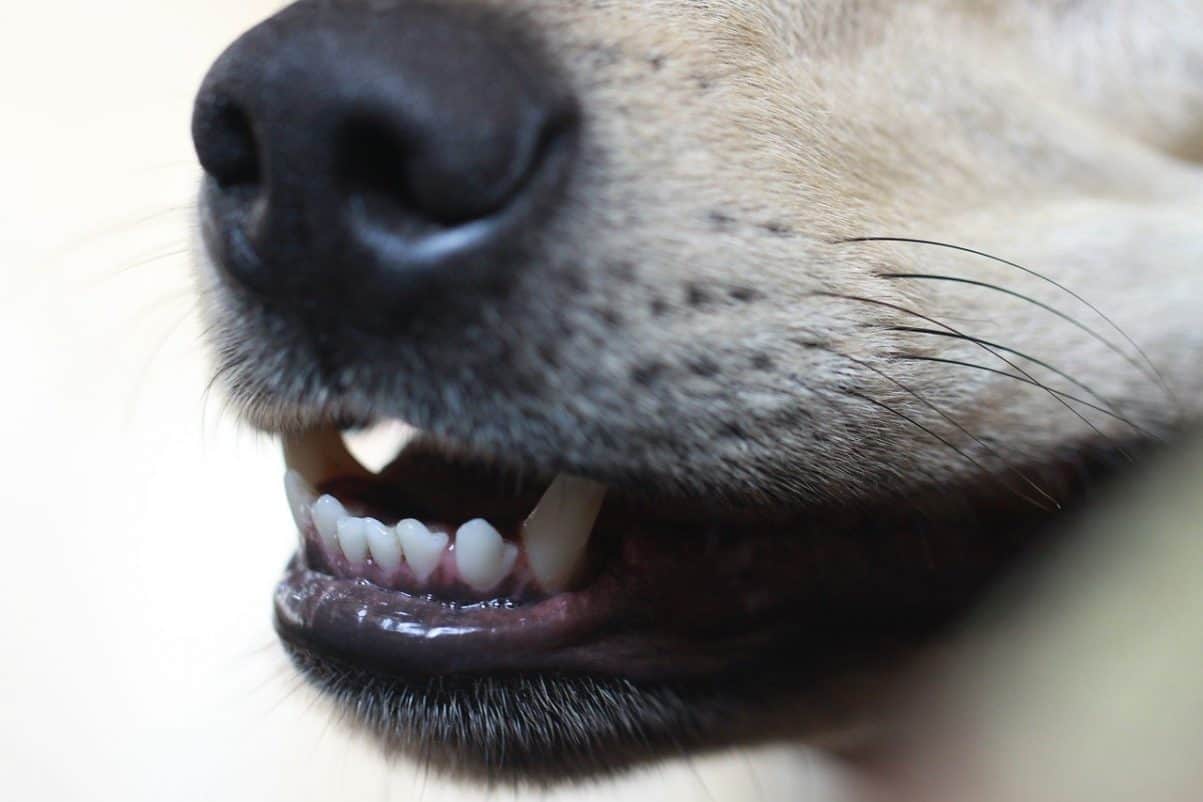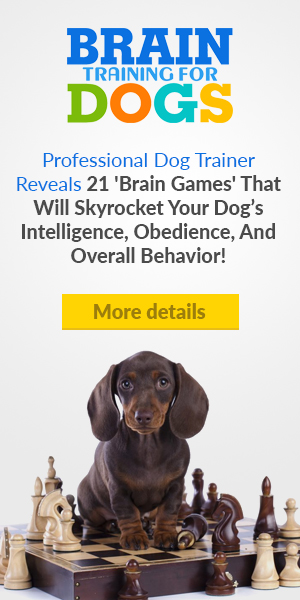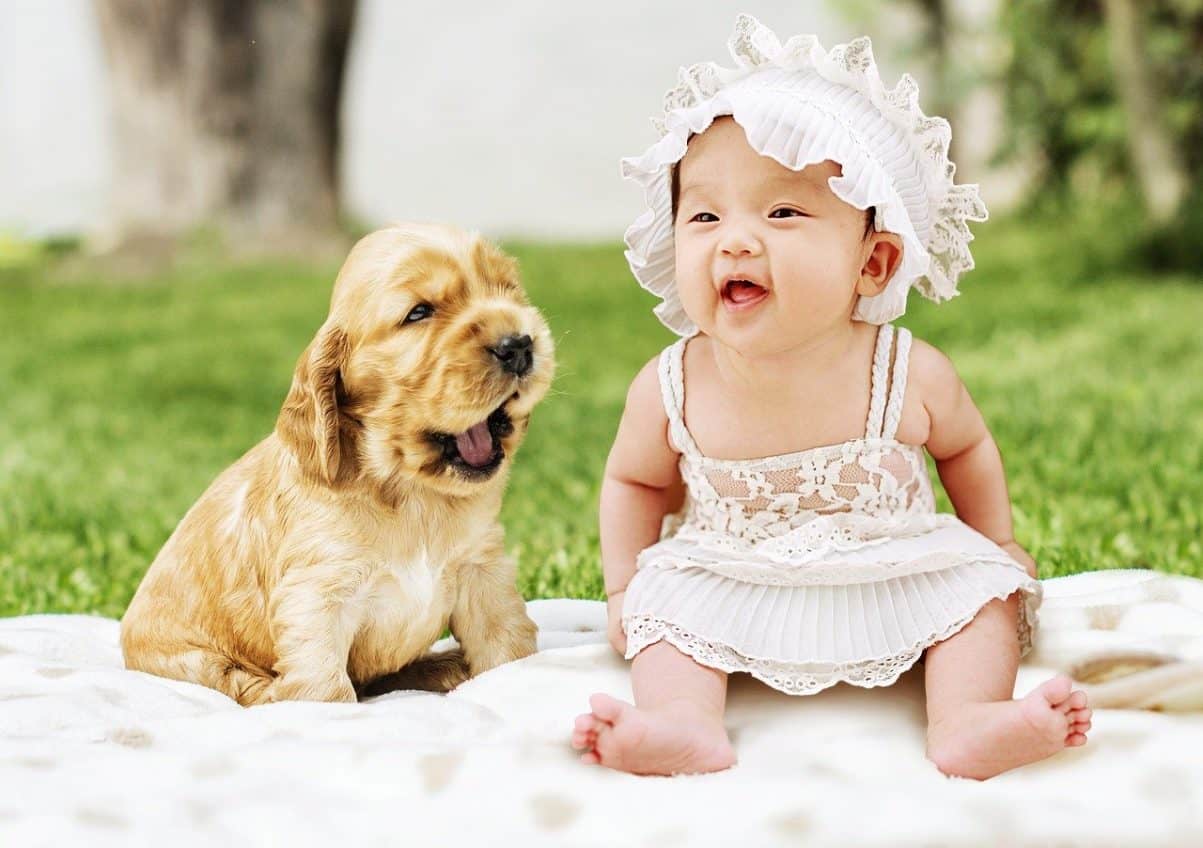There are several momentary and long-term solutions you could try if your dog shows teeth to your child:
- Use momentary distractions like toys and treats to get the dog away
- Teach the dog to walk away
- train it to be more patient with kids
- Show your child how to be gentler and more considerate with your pet
- Ask your vet if your dog needs medication
Baring teeth isn’t always a sign of aggression. However, if paired with other indicators, it may be an issue.
What to Do When Your Dog Shows Teeth to Your Child
There’s nothing better than having a well-behaved family dog while your children are growing up. However, that lovely fantasy isn’t without its challenges.
What if your dog isn’t as docile as you’d like it to be while your children are playing with it? What should you do when your dog shows teeth to your child?
Naturally, if your dog starts growling at your child, it’s most likely an act of aggression. But sometimes our furry friends can reveal their teeth for other reasons, as well.
So before we tell you how you can correct that behavior, we have to stop and consider whether the mere act of baring teeth is always hostile.
Why Do Dogs Bare Their Teeth?
As most dog owners know, baring teeth is often a warning — but not always. In dogs as in most other animals, the act of curling the lips back to show teeth can have different meanings.
Namely, it can be a sign of aggression or an expression of playfulness.
If your dog shows teeth to your child, you’ll need to be able to quickly identify which of those moods you’re dealing with.
The Start of a Growl
When a dog feels agitated, it doesn’t usually stop at showing its teeth. There are several other indicators that can help us confirm its vicious intentions.
So, in addition to baring teeth and wrinkling its nose, a dog may:
- Grow rigid, even to the point of shaking
- Raise its hackles
- Growl, snarl, or snap its jaw
- Swing its tail or point it upright
- Maintain eye contact or follow our movements
- Point its ears forward
It should be noted that we often see slight differences in offensive and defensive postures.
For example, an aggressive dog would swing its tail and stiffen its legs, pointing the whole body up and forward.
However, a defensive one would shrink its body toward the floor, flattening its ears and tucking its tail.
Of course, just because a dog has assumed a defensive posture doesn’t mean that it’s being submissive. It may still be tempted to attack, even if only to protect itself.
So keep that in mind the next time you spot thоse signs.
A Harmless Smile
Even though most parents assume the worst when they witness a dog showing teeth to their child, we shouldn’t rush to conclusions.
Sometimes, the reason a dog bares its teeth is more benign.
If you don’t spot any of the other signs of aggression I’ve listed, we could be talking about a sign of happiness or relaxation — a simple smile.
While an aggressive dog would wrinkle its snout and retract its tongue while showing its teeth, a happy one would allow its tongue to hang out.
Its nose would probably be relaxed as well, much like the rest of its body. Lastly, unlike aggressive ones, which are looking for a chance to attack.
Learning to recognize whether you’re dealing with an angry, scared, or relaxed dog will help you figure out what to do if your dog shows teeth to your child.
What to Do When Your Dog Shows Teeth to Your Child
So, if you confirm that your dog is exhibiting signs of aggression, should you step in and mediate?
Well, the answer is rather more complicated than you would imagine.
Still, here are some momentary and long-term fixes for your dog’s hostile behavior…
1. Use Momentary Distractions
If you see your dog’s lip start to curl in frustration while it’s near your child, you’ll need to act quickly. Try calling it over to you.
Alternatively, toss your favorite toy or a treat a few feet away to encourage it to move.
On the other hand, if you’re close to the dog and you feel confident that you won’t get hurt, move it away from the child manually.
Use its collar to steer it gently away or push against its chest.
Whatever you do, don’t be aggressive!
That would only make matters worse. Instead, let the dog have some air and cool down for a while.
2. Tell the Dog to Go Away
Usually, when we believe our children are in danger from our dogs, we quickly extract the child from the situation.
However, that can reinforce aggressive behavior and make the dog more likely to snap at the child in the future.
After all, if baring teeth made the child disappear, the dog may try it the next time it wants that result.
So instead of extracting our children, we should be teaching our dogs to excuse themselves from stressful situations.
To begin with, you can start by teaching them to go away:
- Grab a bag of your pet’s favorite treats and tell the dog to “back up” (use any phrase of your choosing)
- Toss the treat a few feet away and wait for your dog to go after it
- Once your pup returns to you looking for more treats, repeat the process
Eventually, the dog will learn to move away from command. However, teaching it to tolerate your child’s behavior would yield even better results.
3. Train the Dog to Be More Patient With Kids
Training your dog to be more indulgent with kids is the best way to avoid potential conflicts. If your pet is older than your child, you might have already tried to prepare it for the baby’s arrival.
However, since babies are mostly stationary, you may not have taught your dog how to handle the kind of rough play toddlers and young kids tend to engage in.
Still, if you’re persistent, you can train your dog to have a positive response to your child’s touch. All you have to do is gently poke, pinch, and pull at the dog’s tail, ears, and body.
Every time the dog doesn’t respond in a negative way, give it a treat.
Those exercises will teach the dog to expect sudden, slightly rough touches. So if your dog shows teeth to your child, it will more likely be just a smile.
However, if you don’t reach a breakthrough, you can always enroll your pup in a training course.
Until the dog can be counted on not to have aggressive outbursts, don’t leave it alone with the children.
4. Teach Your Child How to Behave Around Animals
As much as we don’t want to think about our children being in the wrong, we have to consider that possibility.
Most kids don’t know much about handling dogs, so we can’t hold their ignorance against them. It’s our responsibility to teach them how to behave toward animals in general.
Usually, those lessons start with family pets.
As soon as your child is old enough to understand you, start showing them the correct way to approach your dog.
The dog shouldn’t feel crowded if it’s trying to escape the little one, so make sure your child knows not to follow it around.
Ideally, you should also tell them not to grab, poke, or pull, especially while your pet is sleeping.
In fact, the two shouldn’t have any physical contact without you present. When you’re there, you can demonstrate the level of gentleness necessary to handle a dog.
So you see, kids require guidance in much the same way dogs do — neither naturally know how to behave with the other.
5. Ask Your Vet About Behavior Meds
As a last-ditch effort to prevent your dog from exhibiting aggressive behaviors, you could talk to your vet about anti-anxiety medications.
If your pet is a rescue, it might have had negative experiences that are difficult to get past without chemical help.
However, you’ll have to take the issue up with the vet.
Most Importantly: React Swiftly
As with any living creature, the amount of patience your pet has for children will depend on the day.
However, if you take the time to train your dog to walk away when it feels stressed — and teach your children not to follow — you can avoid those stressful situations.
Still, if your dog shows teeth to your child, you should probably take it as a warning. It’s letting you know that it doesn’t feel comfortable being around your munchkin at the moment.
But don’t worry — once they get used to each other, your baby and the family dog will become best buds before you know it.

